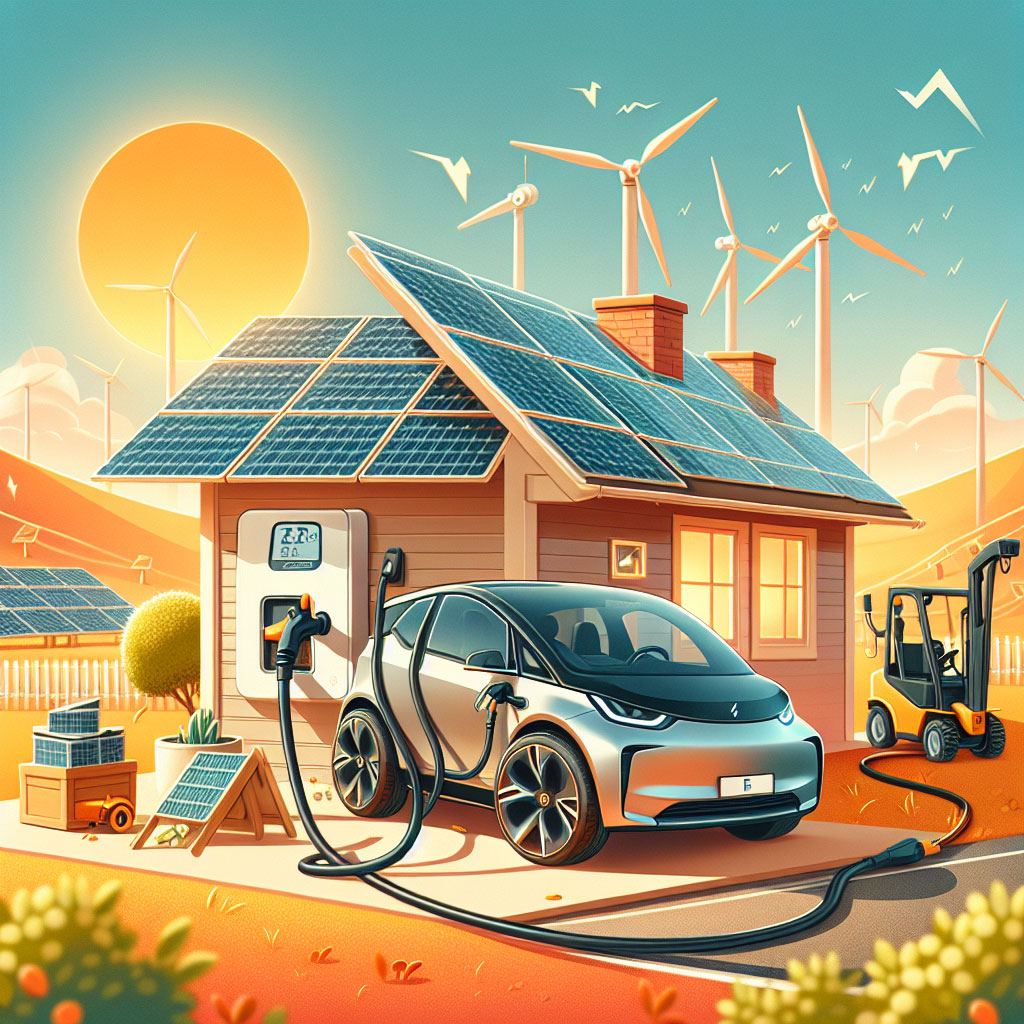
Carmakers and energy companies across Australia are accelerating work on bidirectional charging – the capability for electric vehicles (EVs) to not only draw power from the grid but also feed electricity back into it, into a home, or to other devices. Often described as “batteries on wheels,” this technology promises to support grid stability, unlock new revenue streams for owners, and act as emergency backup power. With the Australian Renewable Energy Agency (ARENA) publishing a national roadmap and multiple industry pilots underway, the nation is preparing for broader deployment. But commercial rollout still depends on a mix of technical standards, market reforms and clearer customer pathways.
How bidirectional charging works
- Basic principle: In normal charging an EV draws electricity from the grid to store in its battery. With bidirectional charging the process is reversible – the car’s battery can export electricity when required.
- Variants: Vehicle-to-grid (V2G) means exporting to the wider electricity network; vehicle-to-home (V2H) supplies a dwelling during high-price periods or outages; vehicle-to-load (V2L) powers appliances directly off the vehicle for recreational or emergency use. Collectively these are often called V2X.
- Hardware and software: Bidirectional operation requires either an on-board inverter in the vehicle or an external bidirectional charger. Communication protocols (for example ISO 15118 and versions of Open Charge Point Protocol) let chargers, cars, aggregators and energy retailers negotiate when to charge or discharge based on price signals and grid needs.
- AC vs DC: AC bidirectional chargers (common for home installations) typically operate at lower power but are cheaper and simpler. DC bidirectional systems enable faster export and grid services but are more complex and expensive.
Benefits for the grid and consumers
- Grid stability and renewables integration: A dispersed fleet of bidirectional EVs can absorb excess solar generation during the day and supply power during peaks, reducing curtailment and smoothing variability across the system.
- Large-scale flexible storage: With millions of EVs expected over coming decades, aggregated EV batteries could become one of the country’s largest flexible storage resources.
- Financial benefits: Owners can potentially reduce household electricity costs by exporting during peak price periods or selling into wholesale or ancillary service markets via an aggregator. In some markets, frequency control ancillary services (FCAS) have proven especially valuable.
- Backup power: V2H can provide resilient backup during outages, offering an alternative to fixed batteries for some households or businesses.
- Greater asset value: Bidirectional capability increases the utility of an EV beyond transport, potentially raising resale values and supporting new business models (aggregator services, demand response).
Progress in Australia
- National guidance: ARENA has produced a national roadmap outlining policy, market and technical steps needed to enable V2G/V2H at scale. That roadmap is helping governments, networks and industry prioritise trials and regulatory changes.
- Trials and pilots: Energy retailers, distribution networks, carmakers and specialist providers have run pilots demonstrating V2G services in markets across Australia. These pilots are testing aggregator models, payment mechanisms, metering approaches and customer experience.
- Commercial innovation: Australian technology providers and platforms are developing smart load control and integration services. Retailers and aggregators are experimenting with price-driven automation – allowing charging and discharging to respond to wholesale price signals or network needs.
- Market bodies: AEMO and state network operators are actively working to include EV-based services in market frameworks and connection arrangements. Work remains on streamlined export approvals, metering and settlement.
Practical considerations and barriers
- Vehicle compatibility: Not all EVs support bidirectional export. Older models and many current vehicles do support V2L or limited export functions, but V2G-ready cars remain a growing segment rather than the default. Compatibility varies by vehicle make, model and on-board hardware.
- Charger hardware and installation: Bidirectional capability requires compatible chargers and, often, specific metering or switchgear. Costs for hardware and installation remain higher than conventional unidirectional chargers.
- Standards and interoperability: Common communication standards are essential so vehicles, chargers and aggregators can interoperate. ISO 15118 and updated OCPP versions are critical pieces but implementation and certification across the industry still need to mature.
- Regulatory and market frameworks: For widespread adoption, customers need clear, fair compensation mechanisms, streamlined export approvals from networks, two‑way metering and the ability for small resources to participate in markets.
- Warranty, degradation and insurance: Automakers and battery manufacturers are cautious. Concerns about warranty implications, battery degradation and insurance must be addressed with clear contracts and data from pilots. Early research indicates controlled V2G use can be managed to limit additional degradation, but consumer protections are required.
- Security and safety: Software security, safe electrical isolation and standardised installation practices are essential to prevent hazards and cyber risks.
How consumers can prepare now
- Check compatibility: Before buying a new EV for bidirectional services, ask manufacturers and dealers whether the model supports V2H/V2G and under what conditions.
- Understand warranties and contracts: Clarify whether participation in V2G programs affects battery warranties or insurance, and read aggregator contracts carefully for payment structures and obligations.
- Assess use cases: If you mainly want backup power, V2H or V2L functions may be sufficient. If you aim to earn revenue by supplying grid services, look for aggregator programs and compatible hardware.
- Look for smart charging and tariffs: Retailers offering time-of-use plans or dynamic pricing can help capture value even without full V2G export capability by timing charging to low-price periods.
- Seek qualified installers: Bidirectional systems require trained electricians and correct metering arrangements. Engage accredited installers and confirm network export rules for your location.
- Monitor incentives and pilots: State governments, networks and retailers periodically offer trials, rebates or early-adopter programs – keeping informed can identify opportunities to join pilots or access support.
What the near future looks like
- Standardisation and market access: Expect continued work on communication standards, certification and market rules through bodies such as AEMO and state regulators. These are necessary to scale aggregator models and to make participation simple and fair for households.
- Broader vehicle support: More manufacturers are evaluating two-way capability. Early adopters and models designed with bidirectional functionality are likely to expand.
- Aggregator and retailer offerings: As pilots demonstrate value, commercial products will emerge that let owners choose automated strategies for savings, revenue or backup – managed via apps and smart chargers.
- Coordination with rooftop solar: Bidirectional EVs paired with rooftop solar create high-value, flexible home-energy systems, enabling households to export to the grid at peak times or consume stored energy at night.
Conclusion
Bidirectional charging represents a significant shift in how Australians can use EVs – transforming cars from one-way consumers of electricity into distributed, controllable energy resources. The technology promises benefits for grid stability, household resilience and owner economics, but a full national rollout requires coordinated progress on standards, market rules, compatible hardware and consumer protections. For owners, the sensible path today is to stay informed: check vehicle compatibility, consider smart charging and keep an eye on pilot programs and retailer offers. As policy and market frameworks mature, bidirectional charging is poised to become a mainstream tool in Australia’s transition to a renewables-rich energy system.
FAQs
What is the difference between V2G, V2H and V2L?
V2G (vehicle-to-grid) exports electricity back to the wider electricity network; V2H (vehicle-to-home) supplies a house during peak price periods or outages; V2L (vehicle-to-load) powers appliances directly from the car for camping or emergency use. The hardware and regulatory requirements differ for each use.
Which EVs in Australia currently support bidirectional charging?
Support varies by make and model. Some earlier vehicles with CHAdeMO ports have demonstrated V2G capability. Many newer EVs offer V2L (power outlets) for appliances, but full V2G/V2H compatibility depends on whether the manufacturer has provided the necessary on-board inverter and software. Always confirm with the manufacturer or dealer.
Will using V2G damage my battery?
Controlled use of V2G, managed by smart systems and aggregator constraints, is designed to limit additional degradation. Trials suggest incremental wear can be small if operations are managed to respect battery health, but owners should verify warranty terms and monitor real-world outcomes.
Can I earn money by exporting from my EV?
Potentially, yes – through wholesale price arbitrage, participation in ancillary service markets (like FCAS) or retailer/aggregator programs. Revenue depends on market conditions, the vehicle’s available capacity and the aggregator’s contract terms. Early commercial models are emerging but returns vary.
Does Tesla support bidirectional charging in Australia?
As of mid‑2024, Tesla’s vehicles have not broadly supported V2G export in most markets. Tesla provides home energy solutions through the Powerwall rather than enabling the Model S/3/X/Y to export to the grid. Owners should check current manufacturer statements for any changes.
How do I get started if I want V2H or V2G?
Start by: confirming vehicle compatibility; consulting your carmaker about V2G/V2H options and warranty implications; talking to accredited installers about suitable bidirectional chargers and metering; and researching aggregator programs or retailer offers. Participation in local pilot schemes can be a practical first step.
About EV Evolution
EV Evolution is the leading online platform dedicated to Australian electric vehicle owners and enthusiasts. We foster a vibrant community, delivering essential EV news and insights, and enhancing user engagement through our innovative, AI-powered chatbot for dynamic discussions. Our mission is to empower Australian electric vehicle owners and enthusiasts by fostering a vibrant, AI-driven online community that connects, informs, and advances the nation’s electric vehicle landscape.




